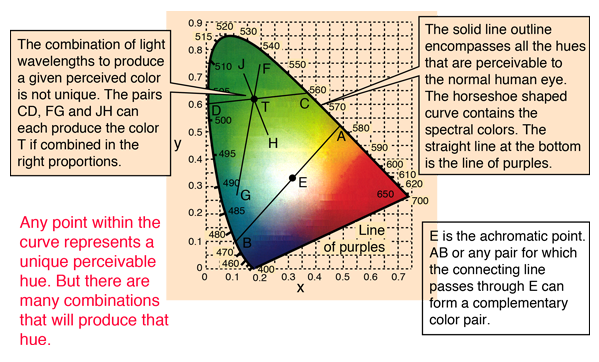Color Perception
The properties of color which are inherently distinguishable by the human eye are hue, saturation, and brightness. While we know that the spectral colors can be one-to-one correlated with light wavelength, the perception of light with multiple wavelengths is more complicated. It is found that many different combinations of light wavelengths can produce the same perception of color. This can be put in perspective with the CIE chromaticity diagram.
The white or achromatic point E can also be achieved with many different mixtures of light, e.g. with complementary colors. If you have two illuminating sources which appear to be equally white, they could be obtained by adding two distinctly different combinations of colors. This implies that … Continue Reading (2 minute read)